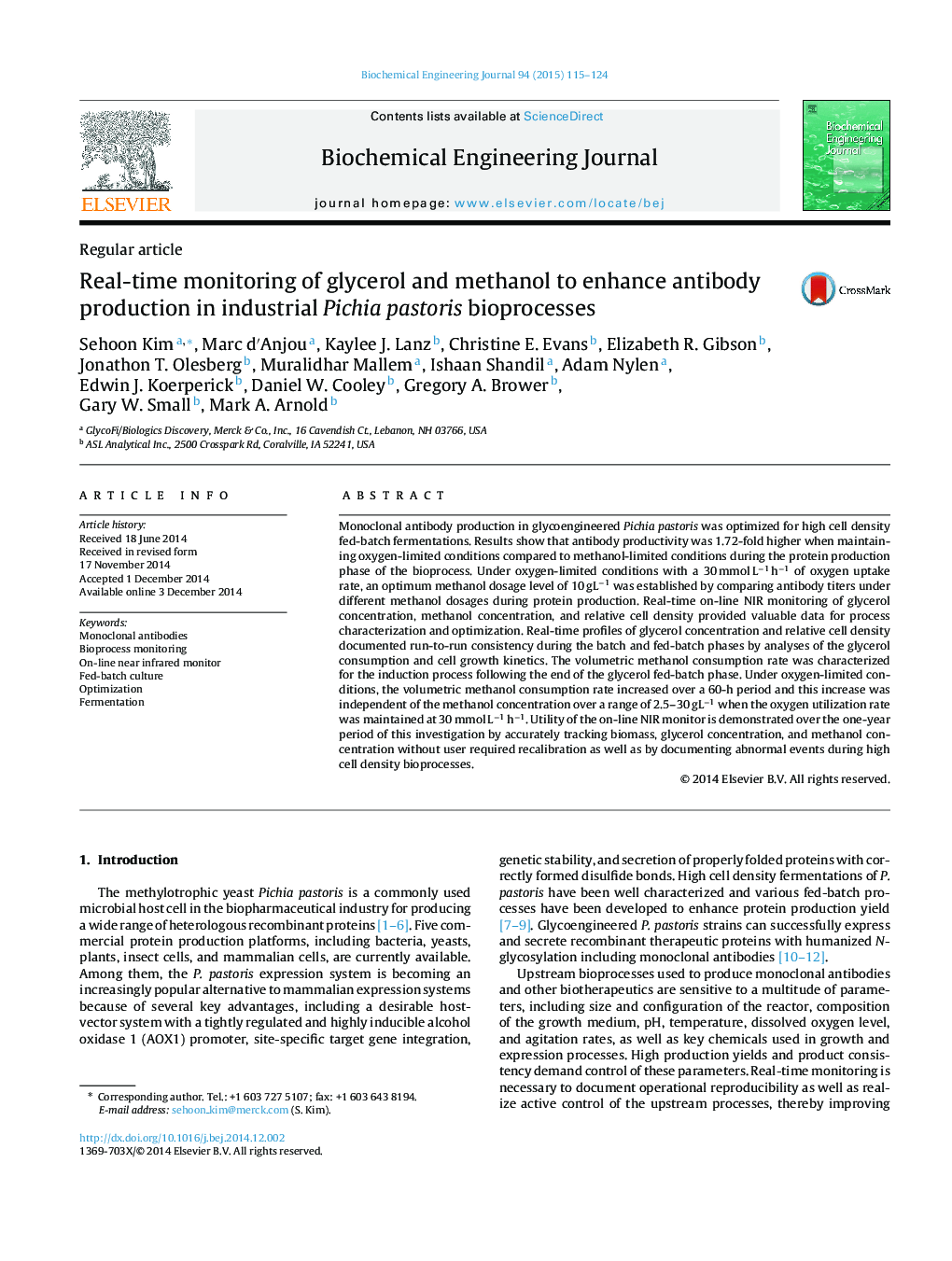| Article ID | Journal | Published Year | Pages | File Type |
|---|---|---|---|---|
| 3045 | Biochemical Engineering Journal | 2015 | 10 Pages |
•The antibody titer in glycoengineered Pichiapastoris was highest at 10 gL−1 methanol dosages in oxygen-limited fermentation.•On-line bioprocess monitor allows accurate tracking of glycerol, methanol, and biomass in real-time.•The monitor tracks critical substrate conditions, such as peak concentration, depletion, and consumption rate.•Bioprocess monitor operated over 365 days without recalibration.•Rapid corrective control and improved process consistency realized by real-time monitoring.
Monoclonal antibody production in glycoengineered Pichia pastoris was optimized for high cell density fed-batch fermentations. Results show that antibody productivity was 1.72-fold higher when maintaining oxygen-limited conditions compared to methanol-limited conditions during the protein production phase of the bioprocess. Under oxygen-limited conditions with a 30 mmol L−1 h−1 of oxygen uptake rate, an optimum methanol dosage level of 10 gL−1 was established by comparing antibody titers under different methanol dosages during protein production. Real-time on-line NIR monitoring of glycerol concentration, methanol concentration, and relative cell density provided valuable data for process characterization and optimization. Real-time profiles of glycerol concentration and relative cell density documented run-to-run consistency during the batch and fed-batch phases by analyses of the glycerol consumption and cell growth kinetics. The volumetric methanol consumption rate was characterized for the induction process following the end of the glycerol fed-batch phase. Under oxygen-limited conditions, the volumetric methanol consumption rate increased over a 60-h period and this increase was independent of the methanol concentration over a range of 2.5–30 gL−1 when the oxygen utilization rate was maintained at 30 mmol L−1 h−1. Utility of the on-line NIR monitor is demonstrated over the one-year period of this investigation by accurately tracking biomass, glycerol concentration, and methanol concentration without user required recalibration as well as by documenting abnormal events during high cell density bioprocesses.
